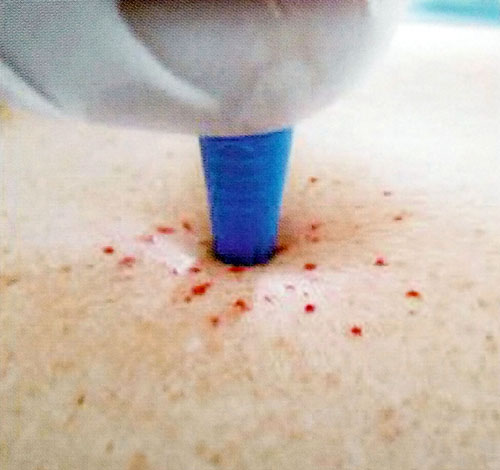To observe the effects of needling Baihui (GV 20), Shuigou (GV 26) and Shenmen (HT 7) on cerebral glucose metabolism in patients with vascular dementia (VD) by cerebral functional imaging technique.
Methods:
Twenty-five patients with VD were divided into 5 groups (Group A, B, C, D and E) randomly. Patients in the Group A were treated by needling routine acupoints for hemiplegia (Acupoints of the three yang meridians of hand and foot), and besides the routine acupoints, patients in the Group B were treated by needling Baihui (GV 20), the Group C by Shuigou (GV 26), the Group D by Shenmen (HT 7), and the Group E by Baihui (GV 20), Shuigou (GV 26), and Shenmen (HT 7). All the patients were examined by Positron Emission Tomography (PET) to detect the cerebral glucose metabolism in the bilateral frontal lobes(orbital gyri), parietal lobes, temporal lobes(hippocampus and hippocampal gyrus), occipital lobes, thalamus, lentiform nucleus, caudate nuclei, cingulate gyrus and cerebellum before treatments and after treatments.

Results:
After needling the routine acupoints for hemiplegia, glucose metabolism increased in lentiform nucleus and temporal lobe; needling Baihui (GV 20), increased in frontal lobe, temporal lobe and lentiform nucleus; needling Shuigou (GV 26), increased in frontal lobe, thalamus and lentiform nucleus; needling Shenmen(HT 7), increased in parietal lobe and lentiform nucleus; and needling these three acupoints, increased in frontal lobe, temporal lobe, thalamus and lentiform nucleus.
Conclusion:
Needling Baihui(GV 20), Shuigou (GV 26) and Shenmen (HT 7) affect glucose metabolism in different functional regions of the brain, and Baihui (GV 20), Shuigou (GV26) and Shenmen (HT 7) relate to different functional regions of the brain.

![Diseases, Symptoms, tcm, [tcmwindow.com]](/uploadFile/adImg/2015/11/11/f5cbfcc0-4df5-4646-9b9a-f316651a0199.jpg)





